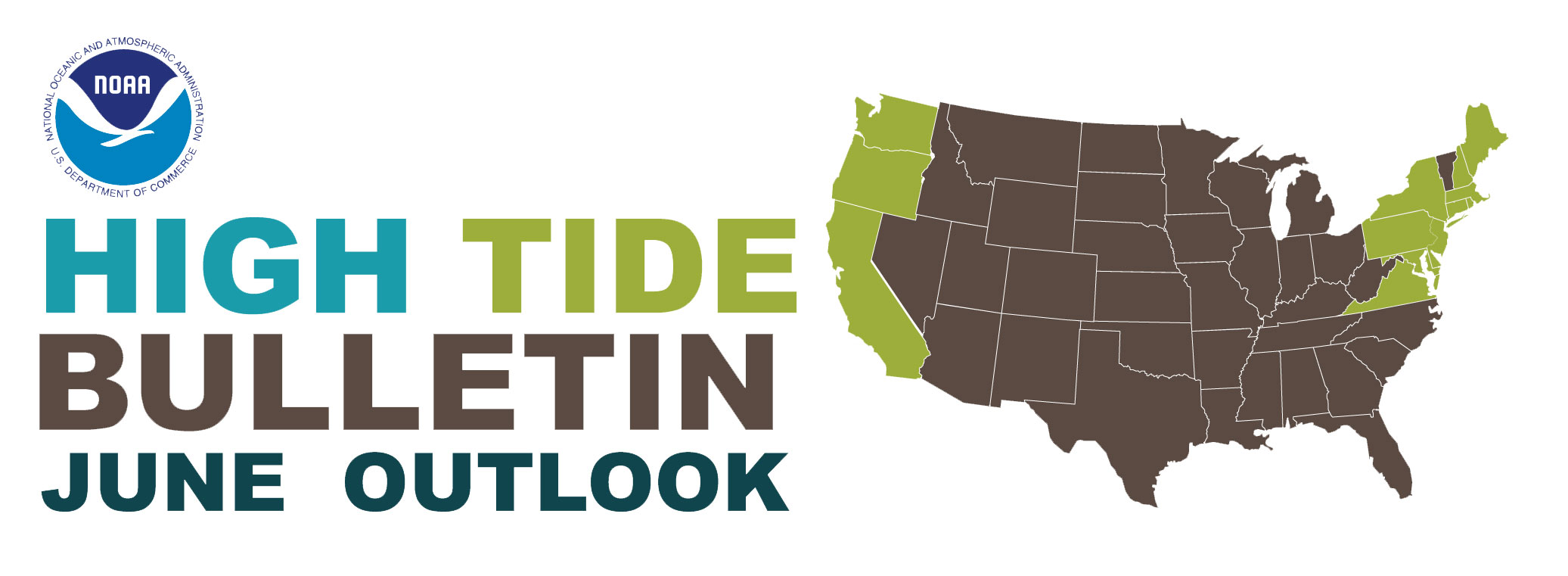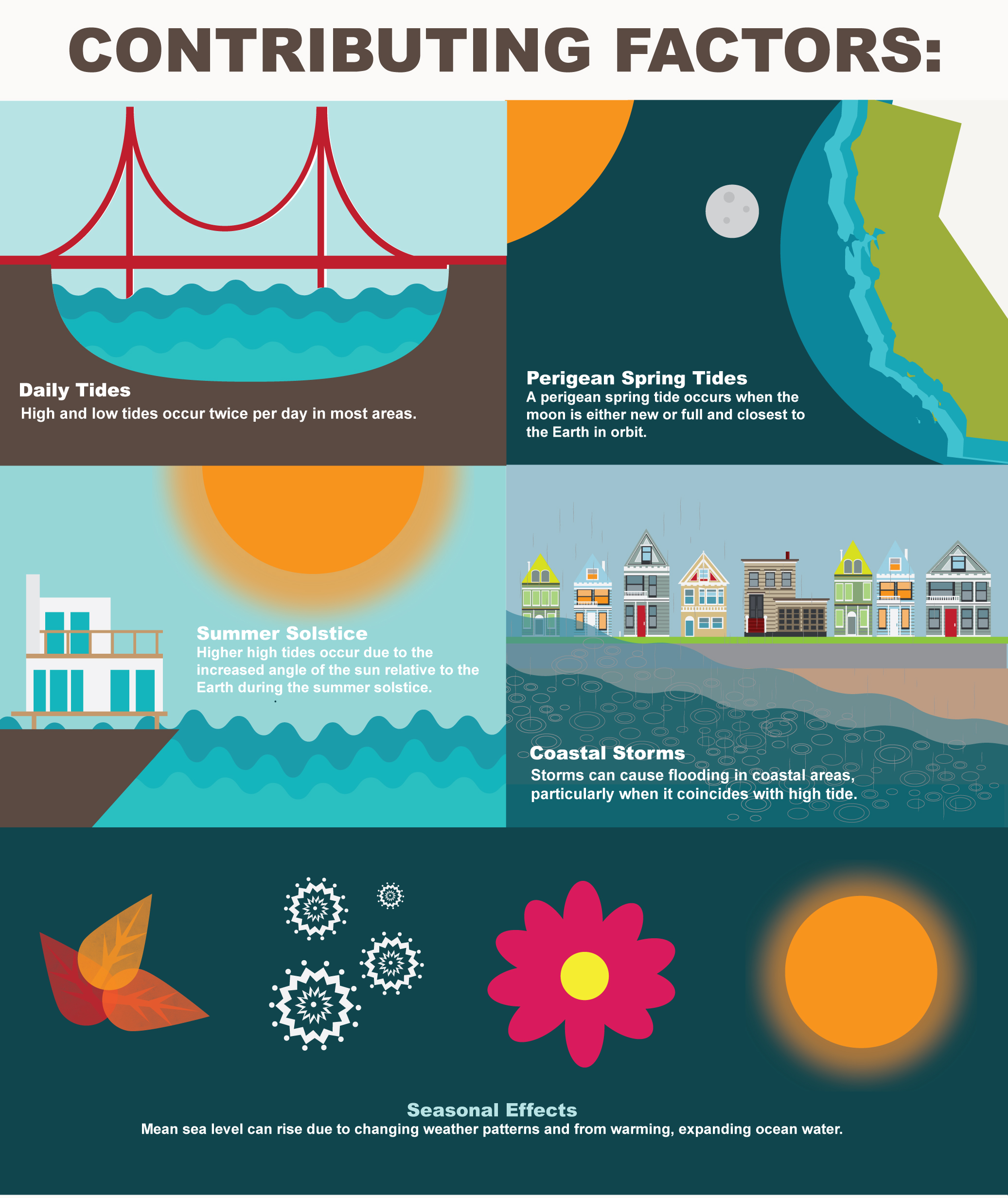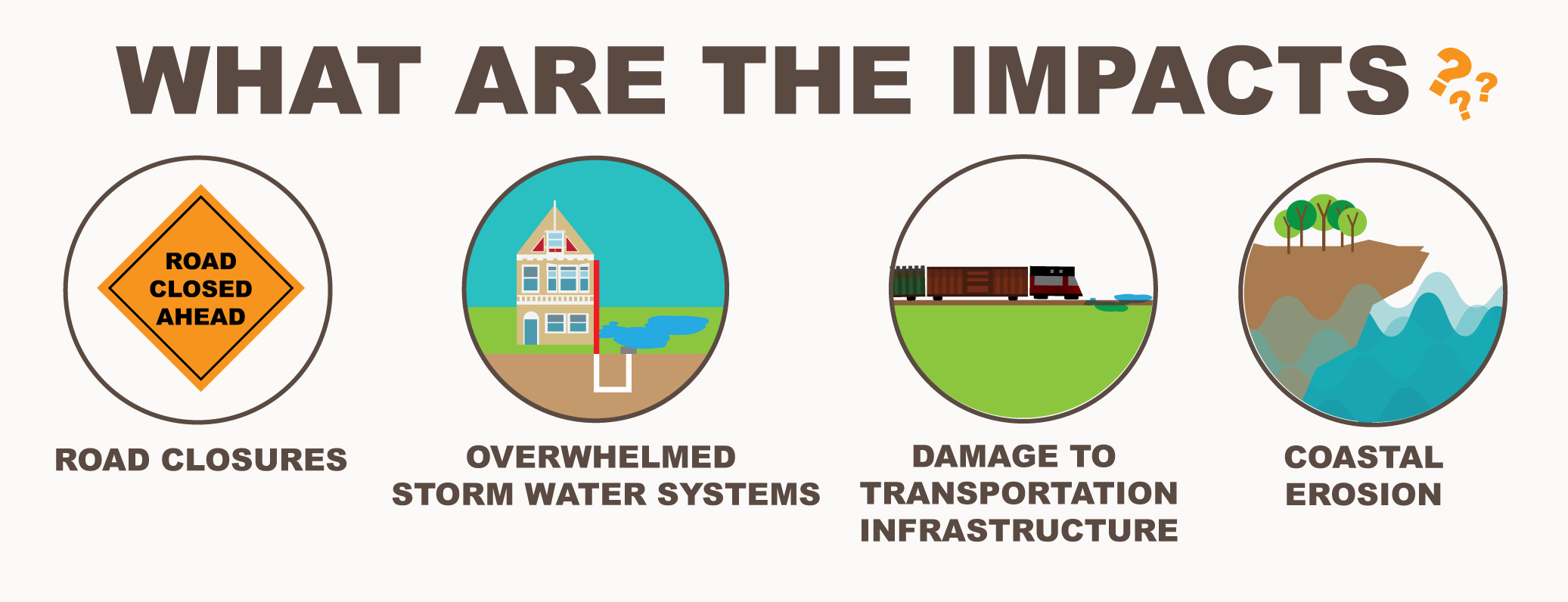NOAA High Tide Bulletin: June 2016 Outlook

The rising and falling of the sea is a phenomenon upon which we can always depend. Caused by the gravitational pull of the moon and the sun, tides are very long-period waves that move through the ocean and progress toward the coastlines where they appear as the regular rise and fall of the sea surface. There are some factors that cause the tides to be higher than what is "normally" seen from day to day. This bulletin tells you when you may experience higher than normal high tides for June, 2016.
- When will the tides be higher than normal?
- • June 3-7, 2016.
- Which regions are most likely to be impacted by these abnormal tides?
- • Most significant from the Northeast to the Mid-Atlantic region and the West Coast.
- Why will they be higher than normal?
- • A perigean spring tide will be occurring. When the moon is either new or full and closest to earth, higher than normal high tides and lower than normal low tides can occur. In this case, moon perigee occurs on June 3.
- • On the West Coast in particular, there will be higher tides near the June 21 summer solstice due to the position of the sun relative to the earth's equator.
- • In the Northeast and Mid-Atlantic, mean sea level is higher in the spring and summer, caused by increasing water temperatures and changing weather patterns.
- What kind of impact might I expect along the coast?
- • Minor tidal flooding along the coast, in particular in low-lying areas.
- • If a storm occurs at this time, increased levels of tidal flooding and coastal erosion may occur.
- • Lower than normal low tides may also occur.
NOTE: Higher than normal high tides alone generally do not cause significant flooding or negatively impact coastal areas. It is the combination of higher than normal water levels during these high tide periods and weather or wave conditions that leads to flooding and negative coastal impacts.

Contributing factors to high tides

Several factors contribute to high tides:
- Daily tides: High and low tides occur twice a day in most areas.
- Perigean spring tides: This perigean spring tide occurs when the moon is either new or full and closest to the Earth in orbit.
- Summer Solstice: Higher high tides occur due to the increased angle of the sun relative to the Earth during the summer solstice.
- Coastal storms: Storms can cause flooding in coastal areas, particularly when it coincides with high tide.
- Seasonal effects: Mean sea level can rise due to changing weather patterns and from warming, expanding ocean water.
What are the impacts of high tides?

Impacts due to coastal flooding include road closures, overwhelmed storm water systems, damage to transportation infrastructure, and coastal erosion.
This is the first of a new series of seasonal bulletins to let you know when you may experience higher than normal high tides. The next bulletin will be issued in the fall of 2016. NOAA is the nation's official source for tidal information.